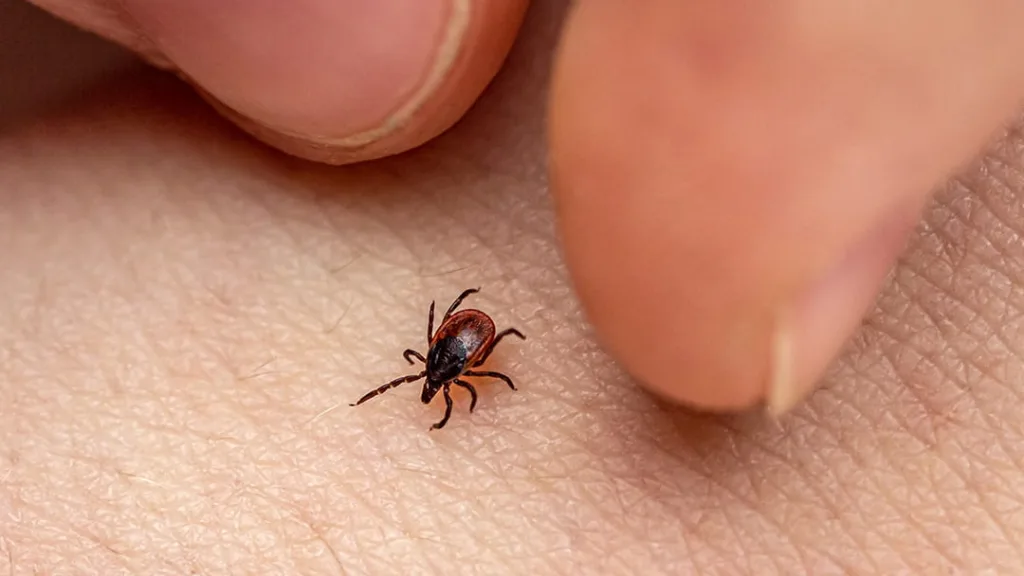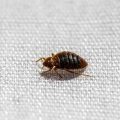Ticks are small, blood-sucking parasites that are commonly found in wooded areas, tall grasses, and other outdoor environments. While they are known to be a nuisance to humans and pets, many people wonder if ticks can actually live in their homes. In this article, we will explore the answer to this question and provide some tips for preventing tick infestations in your home.
First, it is important to understand that ticks are not commonly found inside homes. They typically require a specific environment to survive, which includes high humidity, warmth, and access to a host (such as a human or animal). In a typical house environment, unfed deer ticks are not likely to survive for more than 24 hours. This means that if you find a tick inside your home, it is most likely a one-off occurrence and not an indication of a larger infestation.
However, it is still possible for ticks to enter your home and potentially lay eggs, which can lead to an infestation over time. Ticks can hitch a ride indoors on clothing, pets, or other objects, and then make their way into hiding places such as beds, furniture, and curtains. Once there, they may lay eggs and reproduce, leading to a larger tick population in your home.
To prevent tick infestations in your home, it is important to take steps to keep them out in the first place. This includes regularly checking yourself, your pets, and your clothing for ticks after spending time outside. You should also keep your yard well-maintained, clearing away tall grasses and brush and using tick repellent products as needed.
Inside your home, it is important to keep things clean and tidy to reduce hiding places for ticks. Regularly vacuuming carpets and rugs, washing bedding and clothing, and keeping clutter to a minimum can all help to prevent ticks from taking up residence in your home.
If you do find a tick inside your home, it is important to remove it carefully and dispose of it properly. Do not try to crush the tick, as this can release harmful bacteria into the air. Instead, use tweezers to grasp the tick as close to the skin as possible and pull it straight out. Then, flush the tick down the toilet or place it in a sealed container for disposal.
While ticks are not commonly found inside homes, it is still important to take steps to prevent infestations and to remove any ticks that may enter your home. By keeping your yard and home clean, checking for ticks regularly, and taking proper precautions when removing ticks, you can help to protect yourself and your family from these pesky parasites.
The Lifespan of Ticks in a House
Ticks are small arachnids that are known to transmit diseases to humans and animals. They are most commonly found in outdoor environments, particularly in areas with tall grass, bushes, and trees. However, ticks can also make their way into homes through pets, clothing, or other means.
The lifespan of a tick depends on several factors, including its species, environmental conditions, and access to a host. In general, ticks can survive for several days to several months in a house, depending on these factors.
Unfed deer ticks, for example, are unlikely to survive for more than 24 hours in a typical house environment. This is because they require high humidity levels to survive, and indoor environments are generally drier than outdoor ones.
However, ticks that have taken a blood meal from a host may survive for a bit longer. These ticks can go into a dormant phase where they don’t feed and can survive for several months in a house, particularly if they have access to moisture.
If you suspect that you have ticks in your house, there are several steps you can take to eliminate them. These include vacuuming regularly, washing and drying clothing and bedding at high temperatures, and using tick repellents and insecticides.
It’s also important to check yourself, your pets, and your family members for ticks regularly, particularly if you have spent time outdoors or in areas where ticks are common. Early detection and removal of ticks can help prevent the transmission of diseases and keep your home tick-free.

Dealing with Ticks in the Home
Ticks are parasitic arachnids that feed on the blood of humans and animals. They are commonly found in wooded areas and can also make their way into homes. If you find ticks in your house, there are a few steps you can take to safely remove them.
1. Don’t step on the ticks: The body of a tick is very hard and can survive being stepped on. Instead, use a piece of toilet paper or tissue to pick up the tick.
2. Flush the ticks down the toilet: Put the tick in the toilet and flush it down. This will ensure that the tick is disposed of properly.
3. Clean the area: After removing the tick, clean the area thoroughly with soap and water. This will help to prevent the spread of any diseases the tick may have been carrying.
4. Check for more ticks: Ticks can be difficult to spot, so it’s important to check the area for more ticks. Look for them in cracks and crevices, on pets, and on clothing.
5. Call a professional: If you are unable to remove the ticks yourself or if you find a large infestation, it’s best to call a professional pest control service. They will be able to safely and effectively remove the ticks from your home.
Finding ticks in your house can be a cuse for concern, but by taking the proper steps you can safely remove them and prevent any further infestations. Remember to always use caution when handling ticks and seek professional help if needed.
Can Ticks Live on Beds?
Ticks are known to be parasitic arthropods that feed on the blood of humans and animals. They are commonly found in grassy and wooded areas, but can also infest indoor environments, including beds. Ticks can easily hitch a ride on humans or pets and get into the bedding, where they can survive for extended periods of time.
Ticks prefer to hide in bedding materials such as blankets, sheets, and mattresses. They also like to hide in the crevices and seams of the bed, making it difficult to spot them. Ticks can survive for several months without food, making them a persistent problem in the home.
It’s important to note that ticks don’t only live on beds. They can be found in other areas of the home, including furniture, carpets, and curtains. However, beds are a common hiding spot for ticks due to the easy access they provide to human hosts.
To prevent ticks from infesting your bedding, it’s important to take precautions. Here are some tips to keep ticks away from your bed:
– Use a bed bug and tick-proof mattress cover.
– Wash bedding regularly in hot water and dry on high heat.
– Vacuum your mattress and surrounding area regularly.
– Check your pets for ticks and use tick prevention products on them.
– Keep your yard and outdoor areas well-maintained to reduce the tick population.
Ticks can live on beds and other bedding materials, making it important to take steps to prevent infestations. By following the tips above, you can reduce the risk of ticks in your home and protect yourself and your family from tick-borne diseases.
Can Ticks Infest a Home?
Ticks can indeed infest a house, particularly if a tick has been brought inside by a pet or person. Once a tick is inside, it may reproduce and create an infestation. Ticks can lay their eggs in various parts of the home, such as near baseboards, window and door surrounds, furniture, edges of rugs, and curtains. It’s essential to note that ticks prefer humid environments and are typically found in areas with high moisture levels.
To prevent a tick infestation, it’s crucial to take steps to keep ticks out of your home. You can do this by regularly inspecting your pets for ticks after they’ve spent time outdoors and treating them with tick prevention medication. Additionally, you can take measures to keep your lawn and yard tidy, such as mowing the grass regularly and removing any debris where ticks may hide.
If you suspect a tick infestation in your home, it’s essential to take immediate action to eliminate the problem. You can do this by vacuuming your home thoroughly, washing all linens and clothing in hot water, and using tick control products such as pesticides or tick repellents. It’s also a good idea to seek the advice of a pest control professional who can provide more targeted and effective solutions to eliminate the infestation.
Conclusion
Ticks are more than just annoying pests that can cause itchy bites. They can also transmit serious diseases to humans and pets. It’s important to take precautions when spending time outdoors in areas where ticks are present, such as wearing long clothing and using insect repellent. Additionally, it’s crucial to check for ticks on yourself, your family, and your pets after spending time outside. If you do find ticks in your home, take prompt action to remove them and prevent a potential infestation. By being aware of the risks associated with ticks and taking preventative measures, you can help protect yourself and your loved ones from the dangers they pose.












